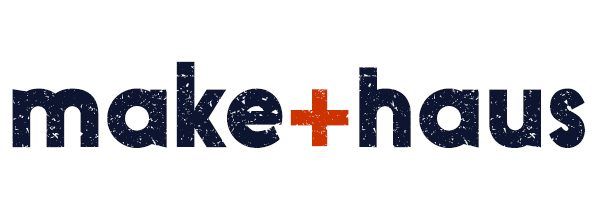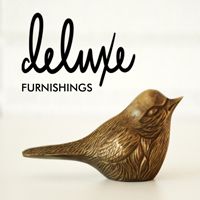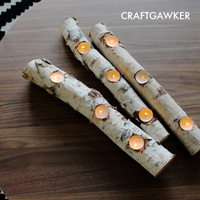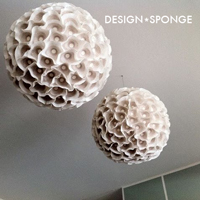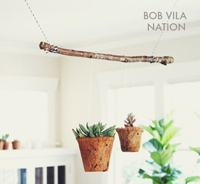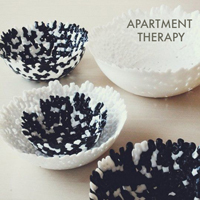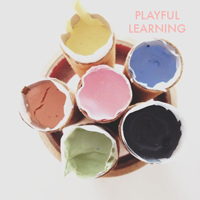Platner Style
/You know that cute side table you find at Target...the one that you can't decide if you like or if it's maybe kind of crappy? You see them on Pinterest and think maybe? I'm a sucker for these things. I bought one last year because it was on clearance, and I liked the base. It reminded me of something, and I had an idea to make it a little more special. First, a little background on a guy named Platner.
Image Source: Knoll
Warren Platner was a architect and furniture designer, probably best known for his welded steel wire tables and chairs that resembled sheafs of wheat. You've no doubt seen them as you peer into the windows of a DWR. He worked for Eero Saarinen in the early 1960's before opening his own firm, where he designed the interiors of several famous buildings, including The Windows of The World restaurant in the World Trade Center. Here is his design for the American Restaurant in Kansas City.
Image Source: Dwell Magazine
It was super groovy. I love those shutters. He so obviously inspired whatever it is that is going on in design today. So Warren Platner is a designer to know, and his work is still produced by Knoll and sold at fancy places like DWR. I love the scale of his side tables, the base feels light and architectural, with a top perfect for a cocktail and a book.
When I saw this table in the clearance section at Target I thought it was so Platner, and I had the idea to salvage the base and replace the top with something more substantial and organic than shiny black plexiglass. After a few months of searching I found a vintage walnut Danish Modern tray in the right size from Co-Mod and got started.
First I removed the plexiglass top, which had a particle board backing fastened to the base with short screws. My handy Aunt was out visiting and helped me delve into using a jigsaw (super easy, get one) to cut a particle board base 1/4" thick, formerly the back of an IKEA dresser. Reduce, Reuse, Recycle.
After tracing the circle we cut the base using a jigsaw, sanding the edges to get a perfect fit.
Next, we drilled holes for the screws, and attached the particle board to the base.
We applied a generous coat of wood glue to the top of the particle board and centered the tray on top. Using a cast iron skilled and a full paint can, we made our own weight and allowed the tray to adhere for 24 hours before removing.
Pretty groovy, right? I really like the way it turned out... Materials cost added up to about $50, about an eighth of the price of a Knoll produced table, and while it's not a Platner, it has that same light and architectural feeling in a room, perfect for a cocktail and a book.
